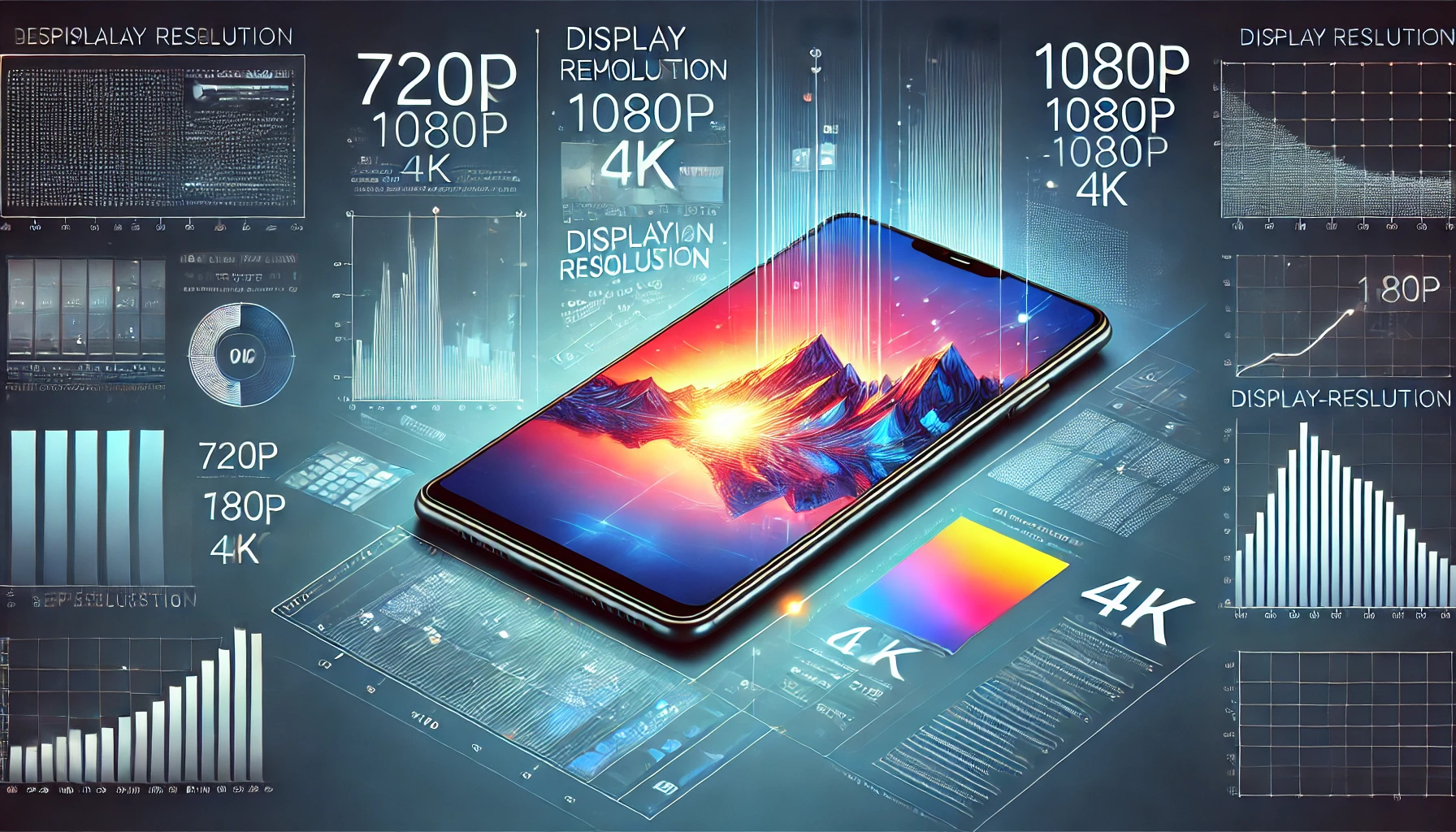In the world of mobile devices, display resolution is a crucial factor that significantly impacts user experience. Whether you’re scrolling through social media, watching videos, or playing games, the clarity and sharpness of your screen can make all the difference. But what exactly is resolution, and why does it matter so much? Let’s dive into the details to understand how display resolution works and how it affects your mobile device usage.
What is Display Resolution?
At its core, display resolution refers to the number of pixels on a screen. Pixels are the tiny dots that make up the images you see. The more pixels a screen has, the clearer and sharper the images will be. Resolution is usually expressed in terms of width x height, such as 1920×1080 (Full HD) or 3840×2160 (4K).
Why Resolution Matters
High resolution is synonymous with high-quality visuals. Here’s why it matters:
- Sharper Images: More pixels mean finer details. Text, photos, and videos appear crisper.
- Better Visual Experience: High-resolution screens provide a more immersive experience, making everything look more lifelike.
- Improved Viewing Angles: Higher resolutions often come with better screen technology, which can enhance viewing angles.
Common Resolutions in Mobile Devices
Mobile devices come in various resolutions. Here are some of the most common ones:
- HD (1280×720): This is the baseline resolution for many entry-level smartphones. It’s decent but may lack the sharpness of higher resolutions.
- Full HD (1920×1080): Found in mid-range devices, Full HD offers a significant improvement in clarity over HD.
- QHD (2560×1440): Quad HD is popular in high-end smartphones, providing even better clarity and detail.
- 4K (3840×2160): Ultra-high resolution, primarily found in flagship devices, offering unparalleled sharpness and detail.
Pixel Density: The Role of PPI
While resolution is essential, pixel density—measured in pixels per inch (PPI)—also plays a crucial role in display clarity. A higher PPI means that pixels are packed more densely, resulting in sharper images. For example, a 5.5-inch Full HD screen has a higher PPI than a 5.5-inch HD screen, making it appear sharper.
Factors Influencing Display Quality
Several factors influence display quality beyond resolution:
- Screen Size: Larger screens with the exact resolution as smaller ones will have lower PPI and thus appear less sharp.
- Display Technology: OLED, AMOLED, and Super AMOLED screens often provide better color accuracy, contrast, and brightness compared to LCD screens.
- Color Accuracy: High-resolution displays with good color accuracy can reproduce images more faithfully.
How to Choose the Best Resolution for Your Mobile Device
When selecting a mobile device, choosing the correct resolution can be overwhelming. Here are some tips to help you make an informed decision:
- Consider Your Usage: If you primarily use your phone for texting, browsing, and social media, an HD or Full HD screen might suffice. For gaming or watching movies, a QHD or 4K display is preferable.
- Check the Screen Size: Larger screens benefit more from higher resolutions. A 6-inch screen with QHD resolution will look sharper than the same screen with Full HD.
- Evaluate the Technology: AMOLED and Super AMOLED screens usually offer better performance than traditional LCD screens, regardless of resolution.
- Think About Battery Life: Higher resolution screens can drain the battery faster. Balance your need for sharpness with battery efficiency.
By keeping these factors in mind, you can find a mobile device that offers the best display clarity for your needs.
Real-World Examples
To better understand the impact of resolution, let’s look at some real-world examples:
- Apple iPhone 12 Pro Max: With its 2778×1284 resolution and Super Retina XDR display, it offers stunning clarity and color accuracy.
- Samsung Galaxy S21 Ultra: Boasting a 3200×1440 resolution on a Dynamic AMOLED 2X screen, it provides an exceptional visual experience.
- Google Pixel 5: Featuring a 2340×1080 resolution on an OLED display, it balances sharpness, color accuracy, and battery life efficiently.
Conclusion
Understanding display resolution is essential for choosing the right mobile device. Higher resolution means sharper and clearer images, which can significantly enhance your viewing experience. By considering factors like pixel density, screen size, and display technology, you can make an informed decision that meets your needs. Whether you’re a casual user or a tech enthusiast, knowing how resolution impacts your device can help you appreciate the technology at your fingertips.
Remember, the next time you pick up a new smartphone, take a moment to consider its resolution and how it will affect your daily interactions. The right choice can make all the difference in enjoying your favorite apps, games, and content to the fullest.

